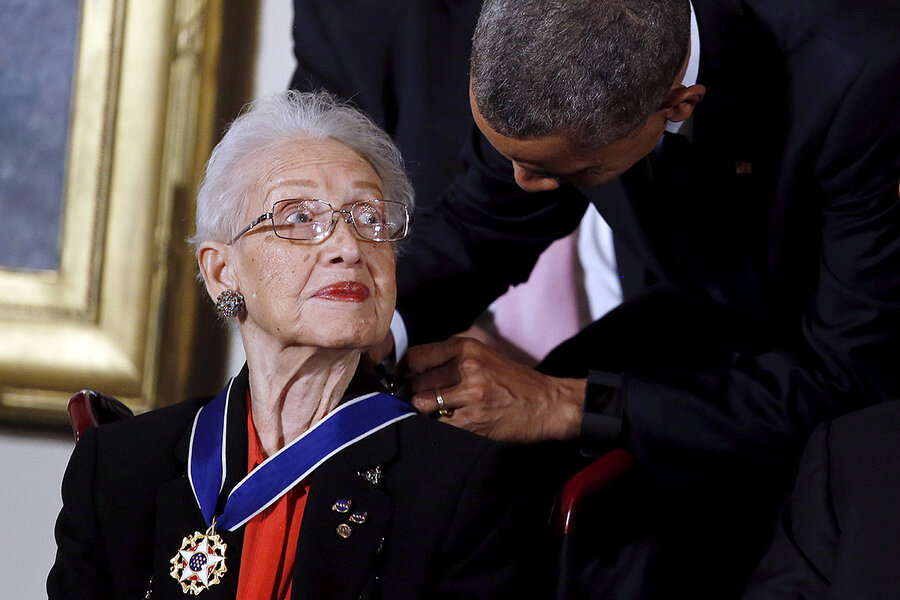Katherine Johnson: Remembering a brilliant mathematician, role model
“I was just doing my job.”
That’s what Katherine Johnson said repeatedly about her mathematical calculations that helped take the first Americans into space and landed men on the moon.
“I was just doing my job,” she told Margot Lee Shetterly as the author researched her nonfiction book “Hidden Figures.”
The centenarian died on Monday, after blazing a trail into STEM for women and minorities through her three-decades long career at NASA. As a human computer at NASA, Ms. Johnson accomplished brilliant feats of mathematics, including calculating the flight path for the launch of the first American in space in 1961 and helping to land the first men on the moon.
Her impressive portfolio of work at NASA alone would be enough to put Ms. Johnson’s name in the history books. But even just a decade ago, her name was not known. As a female, African-American mathematician during the Jim Crow era, Ms. Johnson had to fight to be in the room and to be heard by the white men who were running the show.
Katherine Johnson is the name we know, but she wasn’t the only woman of color whose contributions were long overlooked. A cadre of other computers were responsible for vital calculations as the National Advisory Committee for Aeronautics (the precursor to NASA) got off the ground. They worked in a separate office and used different dining and bathroom facilities from their white male and female co-workers.
Ms. Johnson’s legacy is still being written, as more people learn about her life. As her story has been told, she has become a role model, and her visibility as a brilliant mathematician who battled racism and sexism to literally shoot for the moon will continue to show future generations that when you value every mind, great things can be achieved.







